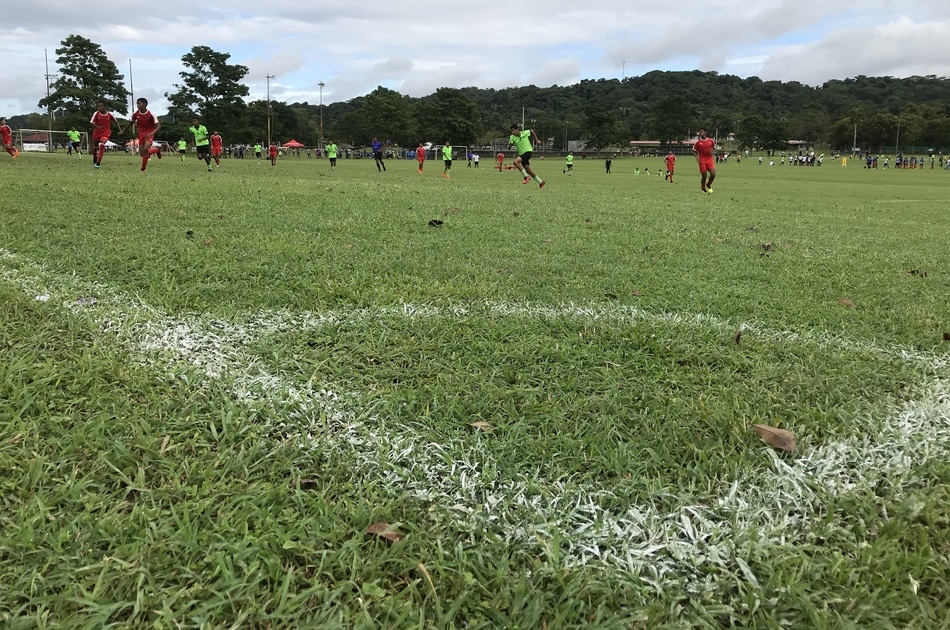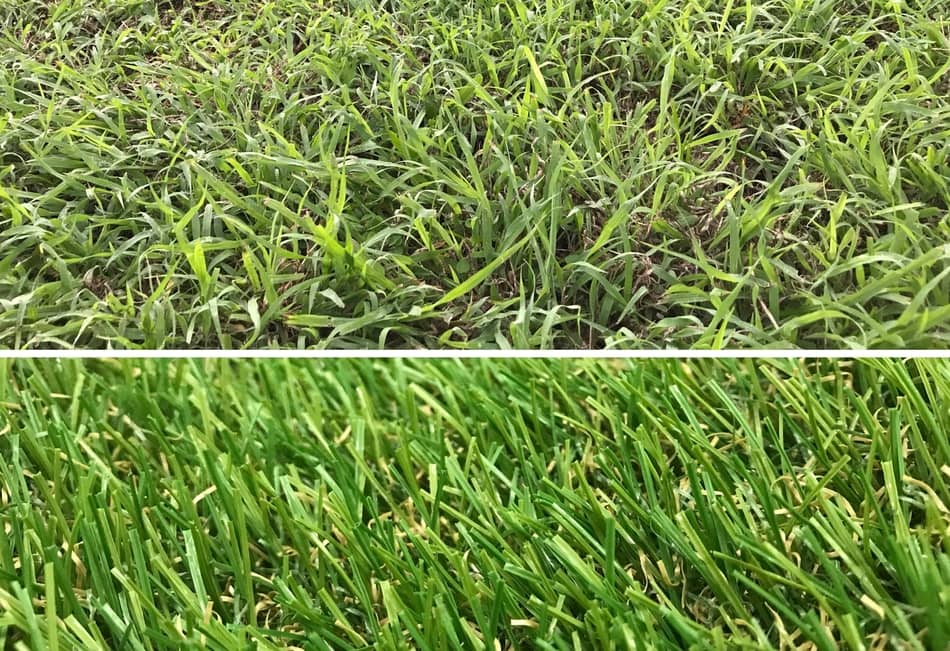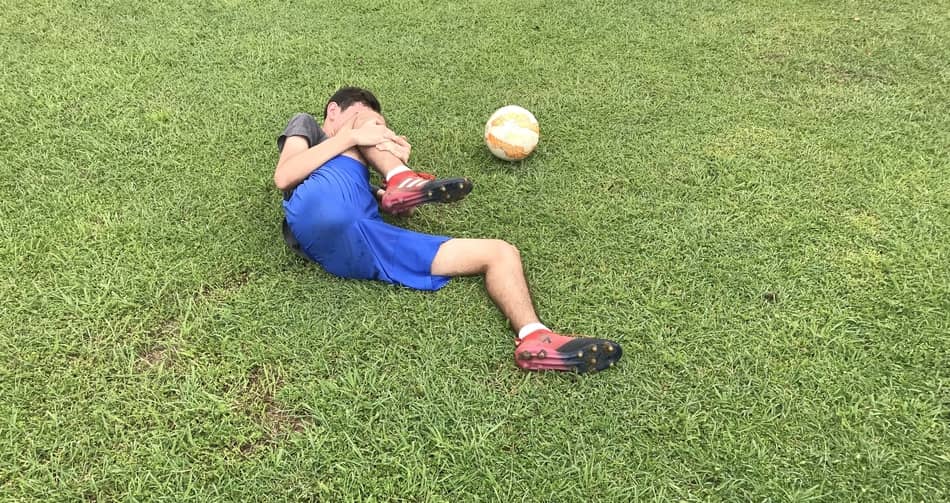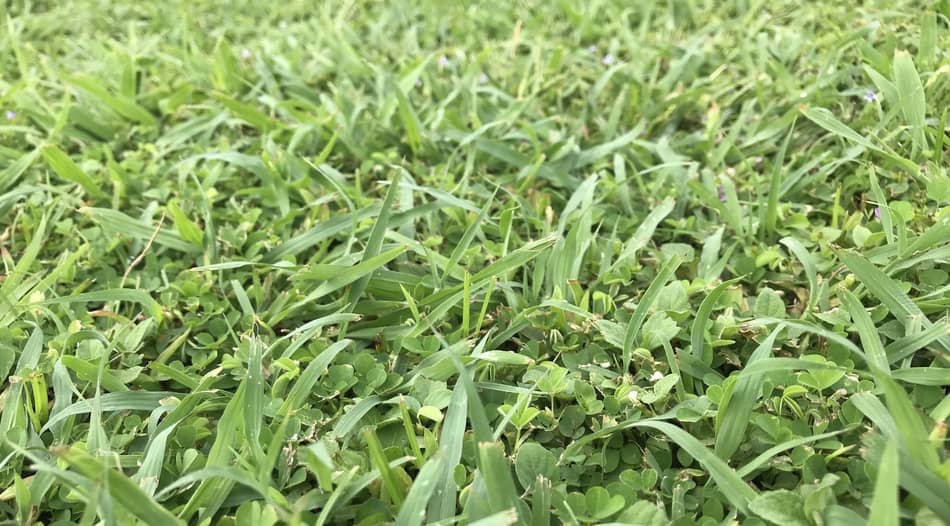
During my life, I’ve had the opportunity to play soccer in both turf and grass, and if they asked me to choose between those two, I would choose grass 100 times. I’m not alone, in fact, most soccer players prefer to play on grass over turf without a doubt which is why all the best leagues in the world, in Europe, have only natural grass pitches.
So, why do soccer players prefer grass over turf? The first and most important reason is because of injuries: Stress on the ACL and other joints increases by 45%. Also, other important factors like excessive heat, and unnatural bounce of the ball significantly affect the performance of the game on turf.
However, those are only a few of the things to mention. It is true that turf has more disadvantages than benefits to it, however the use of this artificial grass pitches becomes more and more common every day. We’ll review why this happens, and find out why it is so important for all professional top-level leagues to have natural grass pitch for their players.
The Grass vs Turf Battle
Since the artificial turfs first appeared this debate existed. There are many myths and things that are said around them that can’t be confirmed by anyone. However, it is true that the appearance of turf fields has made, not only soccer players, but also athletes from other sports, to disagree with the propagation of this fields.
As a young soccer player from the 21st century, I grew up mostly playing on artificial turf fields. They’ve become a “quick solution”, we could say, to have a greater amount of soccer fields around the country. It is hard to find a well maintained natural grass soccer pitch available to play at nowadays, because mostly will be turf pitches.
In the other hand, when you do find a good natural grass field, the experience is completely different from playing on turf. Professional soccer player Sydney Leroux once said in an interview to “Vice Sports”: “The game is completely different, the game is fake. You don’t know how the ball is going to bounce or run. You’re running pretty much on cement”.
I think Sydney’s words represent exactly how professional soccer players feel when playing in turf. It’s like you were playing another game, that is played at a different speed, where you are more likely to get injured, and in which you have to play in different conditions.
There is a reason why all top soccer leagues in Europe are played only in natural grass. You start seeing artificial grass at third division games, maybe. But mostly, soccer players play in natural grass.
Also, it is important to know that all World Cups in history have, and probably will be played in grass. There was only one exception to this and it was the 2015 WWC. There was a lot of conflict around this tournament, and we’ll talk a little bit more in-depth into it later in this article.
In our region, North and Central America (CONCACAF), our top leagues have been troubled to develop the games completely on natural grass fields. In fact, there is a great amount of games that are played on turf in both the MLS and USL. Players that come to the league after playing in Europe like: Lampard, Pirlo, Ibrahimovic, Drogba, and David Beckham all were against playing in fake grass, as they claim that it is completely different and dangerous.
Natural grass is so important, that when European teams come to play to USA during preseason, one of their requirements is that they will only play on natural grass fields. Stadiums will install a temporary grass field over their turf so that european soccer teams can play.

Smaller differences
Many professionals and experts in the game have created the theory that, when playing on an artificial turf, the differences between two teams are smaller than they actually are. Meaning, that it is hard for either team to perform their game at their best level possible. It makes sense considering that the bounce, the touch, passing, shooting, and basically everything in the game is different and harder to achieve at the highest level on turf.
The game on turf is played at a much higher speed, which is why most teams will find it harder to have control of the ball and the game as they would on a natural grass field. When you can’t control the ball how you want it to, the game’s tactic falls apart, and basically we just see two teams running behind a ball like crazy in a messy game.
In contrast, with grass, the ball moves as the players want it to move. It has a more natural and soft bounce in comparison to turf. The ball rolls over the grass at a perfect speed, which makes it easier to control it. Simply, on grass, soccer feels just as it has to feel.
A great example of this is a game that happened in the year 2013: Real Madrid vs Xativa. It was a “Copa del Rey” match in which Europe’s giant Real Madrid, faced an inferior third division team in an artificial turf field. Real Madrid players and coaches said it was unacceptable to play a match in this conditions.
Because of the risk of getting injured, Real Madrid players changed their soccer cleats and the coach only started players from the bench. Still, you would think that the bench of an elite team as Real Madrid could easily destroy a team like Xativa, right? Well, the match ended tied 0-0. I think this game is a clear example that in an artificial turf field, it is harder to perform your soccer at the best level, and that differences among teams are almost none.
This is the probably the best and strongest argument any player or coach can give against playing on artificial turf.
Why are Turf Fields Becoming more Common?
Maintenance costs
Then, if it is clear for everyone that grass fields are way better than turf fields, why are these ones becoming more and more common. As you probably know, maintaining a natural grass field in good conditions can be very difficult and expensive. Natural grass requires regular fertilizing, mowing, irrigating, probably every single day.
Lets say for example that the government is going to build a field or a soccer stadium in your community. If it is not going to be used by a big club or for a recognized event, then probably the easiest thing for them is just to put a turf. In that way they don’t have to hire people or buy equipment to keep the field in good conditions.
Instead, they just put a turf that, depending on the weather and the amount of use, will last for a considerable amount of time. In conclusion, they save a lot of money and time in upkeep costs. However, studies have shown that it is actually more expensive to maintain a turf soccer field (around 23,000 a year), vs the upkeep costs of a natural grass field (14,000 a year). The thing is that facility owners install turf believing that no maintenance is needed, so after a time of constant use, the turf field will be even worse than it actually is brand new.
Time of playing
Artificial turf is more resistant overall to all weather conditions. Severe rain or snow may cause natural grass to have drainage problem, causing to suspend games. Artificial turf will not have this problem, as it is made out of a synthetic material. Playing on a rainy pitch can be tricky, I wrote an article with 16 tips to play soccer in the rain, so you can still be at your top-level during harsh weather conditions.

Natural grass, after some playing time, will wear off and won’t be able to be used again. I remember back at soccer training with my academy, we had incredible facilities with multiple soccer fields. We used to train for a week, two times a day in a soccer a field, and the next week we would move to another soccer field. In this way we could conserve the quality of the grass and kept it in good conditions.
In the other hand, with turf fields you don’t have that problem, the field won’t wear off, maybe after some months using it, if not maintained properly, it will, but, overall, more games can be played in a single day on a turf field than in grass.
Looking at this from an administrative point of view, it makes sense to use turf fields on amateur, non-professional leagues, so that you can get the most out of a soccer field without spending a great amount of money in upkeep costs. Turf fields can be a great option to promote the practice of soccer in a region and get the most out of a field for the lowest cost possible.
However, professional soccer leagues should totally make the investment in natural grass stadiums. Players and coaches would be very grateful of this. Plus, it looks more professional, more likely as how soccer should be seen.
Disadvantages of Turf
We’ll break down the disadvantages of turf into these:
- Injury risk
- Excessive heat
- Unnatural bounce and ball movement
- Abrasive surface
- Exaggerated pace to the ball
Now, we’ll talk about each one more in detail.
Unless you want to get injured playing on turf, make sure to pick the correct shoes for this surface. Make sure to check my article about The Best Turf Shoes in the market.
Injury Risk
Probably this is the most important reason why players prefer natural grass over turf. As I said before playing on turf puts excessive pressure on your lower limb joints. Studies show that chances of suffering an ACL injury in turf increases by 45%. Not only in soccer, but in american football, players were also 67% more likely to suffer from ACL injuries on turf fields.
Injuries are more likely to happen on turf because cleats aren’t able to penetrate the ground as they would on grass. So, when making quick cuts and turns the foot can get stuck in the surface. The risk of suffering an injury on turf can be reduced if you choose the correct pair of shoes for each one. I wrote two articles relating to this topic, the first one being “Can I wear indoor soccer shoes on turf”.
Did you know that there is a difference between Turf and Artificial Grass? You need to know the difference so you can buy the correct pair of shoes for the surface you are playing at and prevent injuries. Click on both links to read this helpful articles.

Excessive heat
This is easily the factor that I hate the most of playing on turf. Because turfs are made out of mostly synthetic and rubber elements, surface temperatures can exceed anywhere between 35° to 55° degrees from the atmosphere temperature during sunny days. This means that in a normal 70° afternoon (21° celsius), the surface on turf can be at 115° (46° celsius).
You see, I live in a city were the average temperature is 95° degrees fahrenheit (35° celsius) during the day. I’ve had to play many times during mid-day at turf fields with that temperature, and belive me, it felt like hell. Literally, you could see the heat on the surface in front of you. Probably the temperature on that field could be at 130° (54° celsius) during those days.
This extreme temperatures are very dangerous to say the least. Can cause dehydration, slow reaction time, and even lose of consciousness. thinking about it now, it shouldn’t even be permitted to play on turf with these temperatures.
Unnatural Bounce and Ball Movement
When playing on turf it is hard to know where the ball will go, it is just not normal and unpredictable. The same happens with passes; what would be a good pass on a grass field can become an imprecise and excessively fast pass on turf. Because of this, the match is kind of uncontrolled by either team.
Abrasive Surface
Due to the excessive friction on the surface skin abrasion is three times more likely to happen on turf than in grass. It makes sense, considering soccer is a game in which you have to slide a lot, specially goalkeepers. You don’t even have to slide to suffer from one, pretty much every time you fall down or touch the surface it will happen.
The game changes a lot in this aspect. Why? Because, well, you can’t slide. You can do it, but if you don’t want a severe burn in your skin its better to prevent from doing it. This is something that can never be taken away from a natural grass field: the pleasant sensation of making a clean slide tackle on a wet field. Something that will never be able to simulate turf.
Exaggerated Pace to the ball
I was watching a “ESPN SportScience” documentary about this, and something that impressed me is that Artificial Turf has a coefficient of restitution about 28% higher than natural grass. This means that with every contact that the ball has with the field, it will retain a higher percentage of its original speed.
This is the reason why I mentioned before that an artificial turf soccer game is excessively fast in comparison to one on grass. The ball just moves too fast, making every aspect of the game to change: The touch on the ball, the shooting and passing technique. Is just as if you were playing a different game. In which it is harder to do everything.
According to the documentary, if you miss time a shot on turf by 0.1 seconds it may get off target even by 11 feet! It’s just mind blowing how bad turf is for soccer.
Benefits and Disadvantages of Grass

I would say that the benefits of playing on grass can be summarized to the following:
- Increased player experience: The overall experience of the players is better, the interaction with the surface just feels improved in comparison to turf.
- Natural bounce of the ball
- Reduced risk of injury: In grass, cleats can penetrate the ground completely. When making quick cuts and changes of direction the cleat can turn without any risk of getting stuck in the surface. Not only the knees, but all the joints of your body are exposed to less pressure.
- You can actually slide: Sliding is one the game’s most important defending techniques that is reduced on artificial turf. In grass you can do it without worrying from getting skin abrasion.
There only two disadvantages that I can think of grass:
- Maintenance: It is definitely harder to maintain a natural grass field. It’s a headache, you need the personnel, you need the equipment, fertilizers, etc. Maintenance is the only reason why we are seeing more and more artificial turf fields. A study at Michigan State University showed that it can cost nearly 50,000 dollars a year to maintain a grass field in good conditions.
- Short playing time: You can’t use a grass field as much as you would use a turf field.
In my post about The Best Soccer Cleats/Football Boots, you can see the best pair of cleats to play on the grass.
The 2015 Women World Cup
The reason why this event is so important because it is the first, only World Cup that has been played on artificial turf in the history of the game. Nobody actually understood the reason why they allowed this, and there was great opposition from all the players and coaches to play in this conditions because of all the reasons I talked about above.
Actually, 40 top women soccer players sued World Cup organizers for gender discrimination. Which is something I totally understand. As Sydeny Leroux said to “Vice Sports”: “This is not equal, for us to be playing the most important tournament of women soccer on artificial grass is totally unacceptable. Men would never play on turf.”There was a great rejection for this event, and hardly we’ll see a world cup event played at artificial turf anytime in the near future.
My Bold Opinion and Experience
Thankfully, I had the opportunity to play on both of these playing surfaces. I grew up in Panama, a country in which the great majority of soccer fields are turf pitches. Panama’s national soccer league is under a constant fight and debate demanding the construction of natural grass soccer field stadiums, as any top-level professional league would have.
I had the opportunity to play at top level natural grass fields at IMG Academy in Florida, and I have to say that the experience is totally different. It is like you were playing another game. In summary, I would say it just feels soft, smooth and correct. This is why I took the time to write this article, to try illustrate with words the difference between both types of surfaces.
However, I have a lot to thank artificial turf fields because, thanks to them, I was able to develop my talent playing soccer since I was child. They offer a solution to the only and major problem that natural grass fields have which is maintenance. Turf fields have helped developed soccer talents all around the world because of the commodity they offer, to install a decent quality pitch for a reasonable cost, without needing to give constant maintenance to it.
With that said, I truly believe that, in able to better prepare future soccer players, it is necesary to create more natural grass field. Having grass pitches is not an option, but a requirement for the development of soccer players at an elite level. In the long-term, you avoided permanent injuries and develop the game in a “natural” way instead of an “artificial” way.
Related Questions
What kind of grass is used on soccer fields? At the Santiago Bernabeu for example, they started using a system that is made by 90% natural grass and 10% artificial grass. In the other hand, in Chile’s stadium, they use a mix of grass for warm station (Bermuda), and one for cold weather (Ray Grass Perenne). It has a 10 cm thickness of sand and 30 cm of gravel. Grass is cut a 2 cm of height.
Why is turf bad for knees? Not only for knees, but also all joints from the lower limb. It is dangerous because the foot doesn’t rotate as natural as it would on grass. If wearing the wrong cleats, your feet might get stucked in its position when turning and making quick cuts, running the risk of suffering a serious injury.

